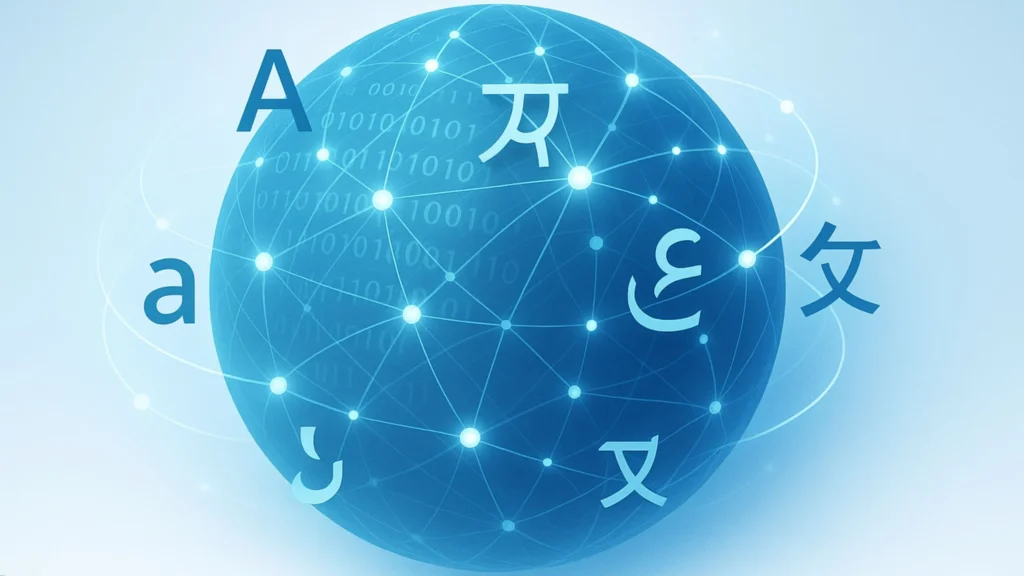
Machine Translation in AI: Everything Enterprises Need to Know
In today’s digital age, machine translation in AI is transforming how businesses communicate across cultures, industries, and markets. The ability of artificial intelligence to accurately and efficiently translate content has become a strategic asset for global enterprises seeking scalable multilingual solutions.
At Seprotec, we know firsthand the transformative potential of AI-driven translation technologies. By offering a complete spectrum of services — from 100% human translation to fully automated AI solutions — we provide clients with customizable workflows that match their exact needs. Our innovative enterprise platform, seprotec.ai, delivers powerful language technology solutions, blending human expertise with cutting-edge AI translations to meet the demands of a rapidly globalizing world.
What Is AI Translation and How Does It Differ from Machine Translation?
Although often used interchangeably, the terms “machine translation” and “AI translation” refer to related but distinct concepts:
- Machine Translation (MT) refers specifically to the automated process of converting text from one language to another. It has evolved from rule-based and statistical systems developed in the 20th century to today’s neural and adaptive models powered by AI. Modern MT systems use algorithmic models – most commonly neural networks – to generate translations based on learned patterns in multilingual data.
- AI Translation is a broader concept. It encompasses machine translation but also includes additional AI-driven tools that support and enhance the translation workflow: automatic quality estimation (AQE), terminology extraction, content classification, and contextual adaptation through NLP and deep learning. Today’s AI-driven translations are capable of capturing broader context and producing more fluent output than earlier models, although they may still struggle with certain domain-specific nuances or ambiguities.
In short, machine translation is a subset of AI translation. While all modern MT systems are powered by AI, AI translation involves a full ecosystem of intelligent systems that support human linguists before, during, and after the translation task.
At Seprotec, we leverage AI-enhanced translation technologies alongside expert human post-editing to deliver results that are linguistically accurate, context-aware, and aligned with the highest industry standards.
A 70-Year Journey: The Evolution of Machine Translation
The quest to automate translation began in the 1950s, when researchers explored how computers might process human language. For decades, this has been one of the most complex challenges in both linguistics and computer science: enabling machines to accurately and meaningfully translate between languages. Since then, we have moved from rule-based systems to statistical methods, hybrid approaches, and today’s neural networks and large language models (LLMs).
While the ambition — to break down language barriers at scale — remains unchanged, today’s AI systems offer unprecedented fluency and contextual understanding. LLMs, in particular, can adapt to tone and style, making them powerful tools for multilingual communication. However, even with these advances, professional human linguists remain essential to ensure accuracy and cultural nuance, especially in regulated or domain-specific content.

From linguists coding rules by hand to AI trained on billions of words — the journey continues, always keeping the human in the loop.
What are the pros and cons of AI Translation for businesses?
Advantages
- Speed: Custom LLMs process high volumes of content far exceeding human capabilities.
- Cost-Efficiency: Reduces translation costs significantly, especially for large-scale projects, even when integrated into post-editing workflows or used for information-only purposes.
- Consistency: Custom LLMs deliver uniform terminology across documents, crucial in technical fields.
- Accessibility: Makes enterprise-grade language services available to smaller businesses.
Disadvantages
- Quality Variability: Fluency does not guarantee accuracy. Natural-sounding output may still carry inaccuracies, particularly risky in regulated industries.
- Data Sensitivity: Without secure deployment, confidential data may be at risk.
- Domain Limitations: Specialized content often requires expert human oversight.
That’s why Seprotec combines domain-trained AI translation with human post-editing and robust quality assurance processes to guarantee speed and linguistic accuracy — without compromising confidentiality.
Seprotec AI Services: Multilingual Solutions for Business at Scale
seprotec.ai is not just a tool — it’s a comprehensive multilingual content localization platform designed for enterprise performance. Key features include:
- Customizable workflows tailored to each client’s needs and content type
- Self-service portal and enterprise-grade API integrations
- Automatic Quality Evaluation (AQE) for informed post-editing
- Optional human review for high-precision content
- Robust data security system. ISO 27001 and GDPR-compliant data security via AWS and Azure
Why seprotec.ai is built for enterprises
At Seprotec, we understand the complexity of multilingual communication in business. That’s why seprotec.ai is built from the ground up for enterprise use. Whether you operate in legal, healthcare, finance, manufacturing, or technology, our AI-enhanced services scale with your organization.
Our platform integrates a curated selection of neural machine translation engines and LLMs. It dynamically selects the best engine for each project based on industry, language pair, and content type — ensuring superior translation quality and consistency. And, for your peace of mind, expert human intervention is just a click away.
There are no comments



Leave a comment